
The House Select Committee to Investigate the January 6th Attack on the United States Capitol held a primetime hearing on Thursday night focused on former President Donald Trump’s refusal to take action as his supporters attacked the Capitol on January 6. Lawmakers dissected the three-hour period on January 6 after Trump urged his supporters to march to the Capitol and “fight like hell.” For 187 minutes, Trump refused to call off the mob or reach out to law enforcement or military leaders to try to stop the violence. Instead, Trump called Republican senators, urging them to stop the certification. “For hours Donald Trump chose not to answer the pleas from Congress, from his own party and from all across our nation to do what his oath required,” said Congressmember Liz Cheney, the committee’s vice chair.
More from this Interview
- Part 1: 187 Minutes: Jan. 6 Hearing Examines Trump’s Refusal to Urge Mob to Stop Violent Attack on Capitol
- Part 2: Pence’s Secret Service Team Feared for Their Lives as Trump Egged On Mob to Target VP on Jan. 6
- Part 3: “I Don’t Want to Say the Election Is Over”: Video Outtakes Show Trump Refused to Admit Loss on Jan. 7
Transcript
AMY GOODMAN: The House Select Committee to Investigate the January 6th Attack held a primetime hearing Thursday night focused on Donald Trump’s refusal to take action as his supporters attacked the Capitol January 6th. Lawmakers focused on the three-hour period after Trump urged his supporters to march to the Capitol and “fight like hell,” knowing many of them were armed. For the next 187 minutes, Trump refused to take any action to stop the deadly insurrection at the Capitol.
We’ll spend the hour airing excerpts from Thursday night’s hearing. Committee Chair Bennie Thompson, who recently tested positive for COVID, opened the hearing by speaking from a remote location in isolation.
REP. BENNIE THOMPSON: For the weeks between the November election and January 6th, Donald Trump was a force to be reckoned with. He shrugged off the factuality and legality correct sober advice of his knowledgeable and sensible advisers. Instead, he recklessly blazed a path of lawlessness and corruption — the costs of which democracy be damned.
And then he stopped. For 187 minutes on January 6th, this man of unbridled, destructive energy could not be moved — not by his aides, not by his allies, not by the violent chants of rioters or the desperate pleas of those facing down the riot.
AMY GOODMAN: Republican Congressmember Liz Cheney, the vice chair of the January 6th committee, accused Donald Trump of refusing to defend the Constitution.
REP. LIZ CHENEY: Donald Trump’s own White House counsel, his own White House staff, members of his own family, all implored him to immediately intervene, to condemn the violence and instruct his supporters to stand down, leave the Capitol and disperse. For multiple hours he would not. Donald Trump would not get on the phone and order the military or law enforcement agencies to help. And for hours Donald Trump chose not to answer the pleas from Congress, from his own party and from all across our nation to do what his oath required. He refused to defend our nation and our Constitution. He refused to do what every American president must.
AMY GOODMAN: Thursday night’s hearing was led by Republican Congressmember Adam Kinzinger and Democrat Elaine Luria, who outlined Trump’s actions once he returned to the White House January 6th, after the Secret Service refused to take him to the Capitol, sparking what she described an angry exchange in the presidential SUV.
This following clip includes prerecorded depositions of former White House counsel Pat Cipollone, Mike Pence’s national security adviser Lieutenant General Keith Kellogg and former Trump assistant Nicholas Luna. This is Congressmember Elaine Luria.
REP. ELAINE LURIA: What you see on the screen is a photo of him inside the Oval Office immediately after he returned from the rally, still wearing his overcoat. A White House employee informed the president as soon as he returned to the Oval about the riot at the Capitol. Let me repeat that. Within 15 minutes of leaving the stage, President Trump knew that the Capitol was besieged and under attack.
At 1:25, President Trump went to the private dining room off the Oval Office. From 1:25 until 4:00, the president stayed in his dining room. Just to give you a sense of where the dining room is situated in the West Wing, let’s take a look at this floor plan. The dining room is connected to the Oval Office by a short hallway. Witnesses told us that on January 6th President Trump sat in his usual spot, at the head of the table, facing a television hanging on the wall. We know from the employee the TV was tuned to Fox News all afternoon. Here you can see Fox News on the TV showing coverage of the joint session that was airing that day at 1:25. Other witnesses confirmed that President Trump was in the dining room with the TV on for more than two-and-a-half hours.
There was no official record of what President Trump did while in the dining room. On the screen is the presidential call log from January 6th. As you can see, there’s no official record of President Trump receiving or placing a call between 11:06 and 6:54 p.m. As to what the president was doing that afternoon, the presidential daily diary is also silent. It contains no information from the period between 1:21 p.m. and 4:03 p.m. There are also no photos of President Trump during this critical period between 1:21 in the Oval Office and when he went outside to the Rose Garden after 4:00. The chief White House photographer wanted to take pictures, because it was, in her words, “very important for his archives and for history.” But she was told, quote, “No photographs.”
Despite the lack of photos or an official record, we’ve learned what President Trump was doing while he was watching TV in the dining room. But before we get into that, it’s important to understand what he never did that day. Let’s watch.
REP. LIZ CHENEY: So, are you aware of any phone call by the president of the United States to the secretary of defense that day?
AMY GOODMAN: Pat Cipollone.
PAT CIPOLLONE: Not that I’m aware of, no.
REP. LIZ CHENEY: Are you aware of any phone call by the president of United States to the attorney general of the United States that day?
PAT CIPOLLONE: No.
REP. LIZ CHENEY: Are you aware of any phone call by the president of the United States to the secretary of homeland security that day?
PAT CIPOLLONE: I am not aware of that, no.
INVESTIGATOR: Did you ever hear the vice president — or, excuse me, the president —
KEITH KELLOGG: No.
INVESTIGATOR: — ask for the National Guard?
KEITH KELLOGG: No.
INVESTIGATOR: Did you ever hear the president ask for a law enforcement response?
KEITH KELLOGG: No.
AMY GOODMAN: That’s Lieutenant General Keith Kellogg.
INVESTIGATOR: So, as somebody who works in the national security space and with the National Security Council, if there were going to be troops present or called up for a rally in Washington, D.C., for example, is that something that you would have been aware of?
KEITH KELLOGG: Yeah, I would have.
INVESTIGATOR: Do you know if he asked anybody to reach out to any of those that we just listed off — National Guard, DOD, FBI, Homeland Security, Secret Service, Mayor Bowser or the Capitol Police — about the situation in the Capitol?
NICHOLAS LUNA: I am not aware of any of those requests.
AMY GOODMAN: That’s Trump assistant Nicholas Luna.
NICHOLAS LUNA: No, sir.
REP. ELAINE LURIA: We have confirmed in numerous interviews with senior law enforcement and military leaders, Vice President Pence’s staff and D.C. government officials, none of them — not one — heard from President Trump that day. He did not call to issue orders. He did not call to offer assistance.
This week we received additional testimony from yet another witness about why the president didn’t make any efforts to quell the attack. The former White House employee with national security responsibilities told us about a conversation with senior adviser Eric Herschmann and Pat Cipollone, the top White House lawyer. This conversation was about a pending call from the Pentagon seeking to coordinate on the response to the attack. Mr. Herschmann turned to Mr. Cipollone and said, “The president didn’t want to do anything.” And so Mr. Cipollone had to take the call himself.
So, if President Trump wasn’t calling law enforcement or military leaders, what did President Trump spend his time doing that afternoon while he first settled into the dining room? He was calling senators to encourage them to delay or object to the certification. Here’s Kayleigh McEnany, his press secretary, to explain.
INVESTIGATOR: All right. Then it says, “Back there, and he wants list of senators.” And then he’s calling them one by one. Do you know which ones he called?
KAYLEIGH McENANY: To the best of my recollection, no. As I say in my notes, he wanted a list of the senators, and, you know, I left him at that point.
AMY GOODMAN: That’s former White House Press Secretary Kayleigh McEnany in a prerecorded deposition. We’ll air more from the January 6th House committee after break, including the outtakes of Trump’s speech the day after January 6th. Stay with us.
[break]
AMY GOODMAN: “Mamita” by Bomba Estéreo and Simón Mejía. Visit democracynow.org, where we’ll be posting our new interview with Simón Mejía in both Spanish and English.

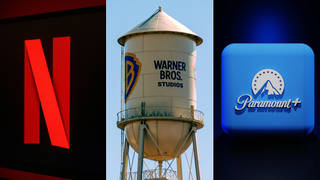
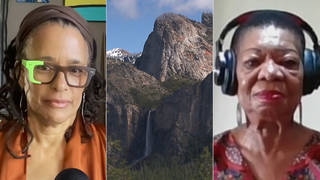
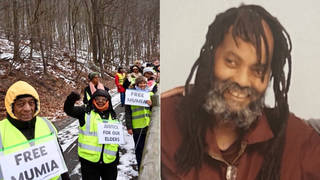
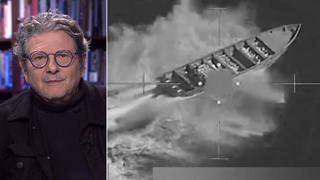






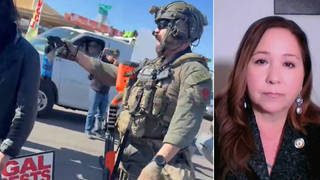
Media Options